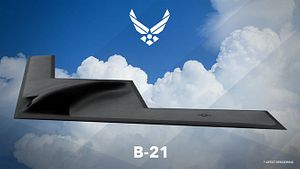The U.S. Air Force (USAF) is preparing to retire its B-1B Lancer and B-2 Spirit fleets in order to free funds for the service’s new long-range stealth bomber, the B-21 Raider, the service said in a February 12 statement.
The USAF’s Fiscal Year 2019 President’s Budget Request details plans to modify and, once sufficient B-21 Raiders are operational, retire the service’s B-1Bs and B-2s as well as update its B-52 Stratofortress fleet.
“As part of our decisions presented in the FY19 President’s Budget, the Air Force will update the B-52 bomber fleet and fund development of replacement engines,” said Secretary of the Air Force Heather A. Wilson. “We will also continue necessary B-1 and B-2 modifications to keep them relevant until the B-21s come on line.”
The budget request is still subject to legislative approval.
“If the force structure we have proposed is supported by the Congress, bases that have bombers now will have bombers in the future,” Wilson added. “They will be B-52s and B-21s.”
The USAF plans for an initial operating capability of the B-21 in 2025. The new aircraft, currently being developed by U.S. defense contractor Northrup Grumman, will purportedly feature stealth capability, carry both conventional and nuclear payloads, and be optionally manned. The service is expected to procure 80-100 new bombers.
The B-1B Lancer is currently the most powerful bomber in the USAF’s inventory. “The USAF’s 62 B-1B Lancers are capable of carrying up to 75,000 pounds (34,000 kilograms) of weapons — the largest payload of both guided and unguided weapons in the USAF’s inventory. Though heavily armed, the bomber can reach a top speed of Mach 1.2 and can operate at altitudes above 30,000 feet (9,100 meters),” I explained elsewhere.
The USAFs 20 B-2 Spirit stealth bomber are also nuclear-capable and can carry B61 thermonuclear gravity bombs, next to a host of conventional bomb loads. The service’s fleet of 58 B-52 long-range, heavy strategic bombers can carry nuclear-tipped and conventional cruise missiles.
“The decision to maintain the B-52 is based on numerous factors including maintenance and sustainment metrics, such as aircraft availability, mission capability, supply, maintenance hours per flying hour and total cost perspectives,” the statement reads.
According to Robin Rand, the USAF’s Global Strike Command commander: “With an adequate sustainment and modernization focus, including new engines, the B-52 has a projected service life through 2050, remaining a key part of the bomber enterprise well into the future.”
In January, the USAF has redeployed B-52s to Andersen Air Force Base on Guam in the Western Pacific in support of United States Pacific Command’s (USPACOM) continuous bomber presence mission in the Asia-Pacific region replacing B-1B Lancers.
Overall, the USAF currently operates a fleet of 157 bombers, a 46 percent decrease from 1991 when the service had 290 bombers.

































